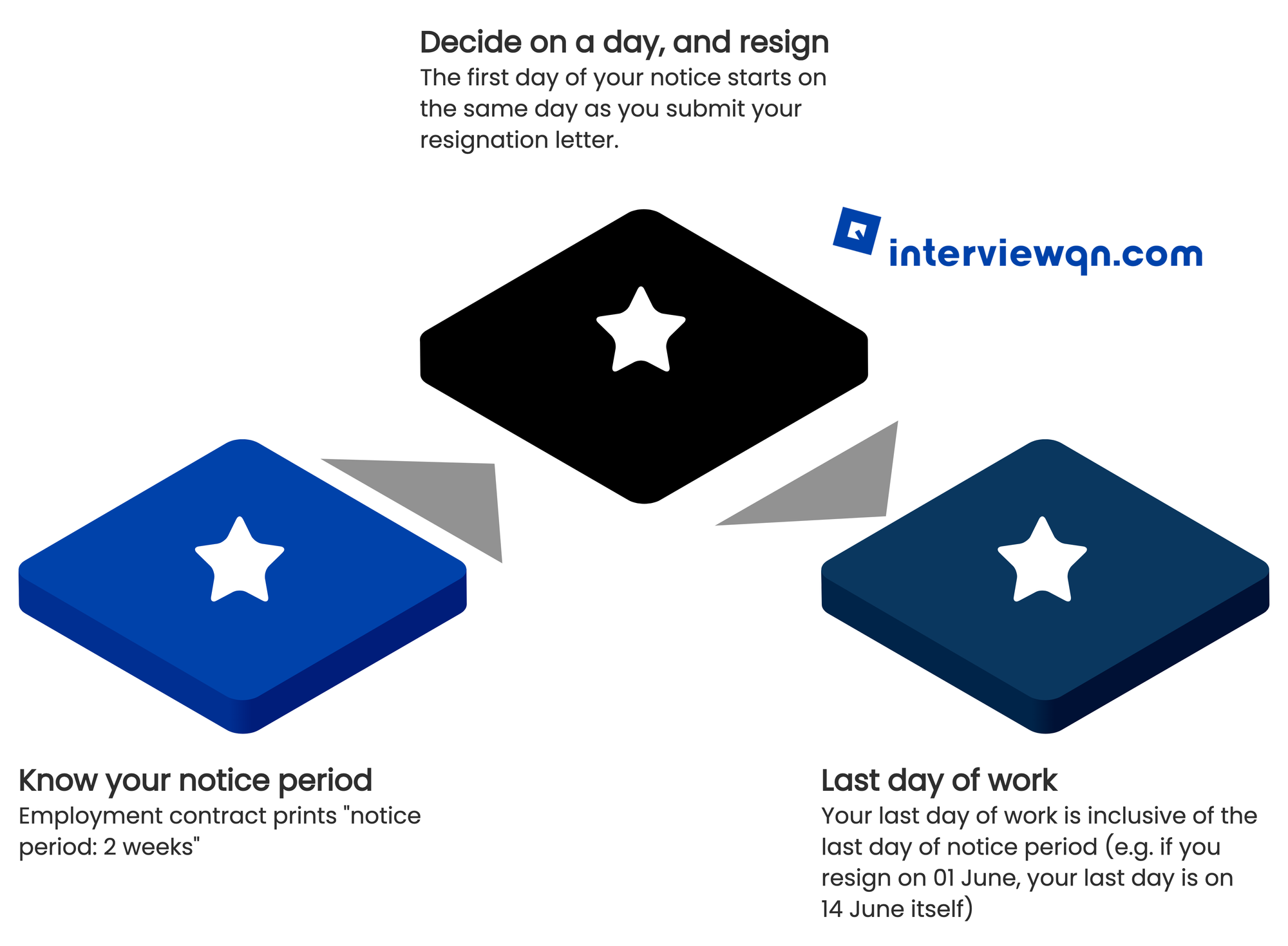How to Define an Employee's Notice Period & Make It Work?
When you resign from a job, you give your employer notice. But how does this work in the real working world? We explore the practical aspects.

2 Ways to Quantify the Notice Period
Usually, the notice period is quantified. This helps all parties - both the employer and employee, plus whoever is gets a hold of the employment agreement - understand in real terms.
The presentation looks like this, in either of these 2 ways (with examples), in the following manner:
- In days, weeks or months (For example, 2 weeks notice)
- A specific date: 24/08/21 (For example, the employee's notice ends on 24/08/21)
Why is quantifying notice this way so important and useful?
Having an objective expression of notice period allows the notice period to be well defined, and subsequently unambiguous (this means it is not easy later on for any person to dispute or argue that the notice period isn't clear).
Infographic to show how notice period works in reality
The diagram below explains the 3-step process on how the notice period works.

First, the employee should find out the agreed-upon minimum notice period as per defined in his employment contract and terms of employment.
Second, upon deciding and submitting his formal letter of resignation, day 1 of the notice begins.
Thirdly, as the resigning employee continues to work on the notice days, the countdown continues until the very last day. After giving the expected considerate notice, he leaves the company on the last working day which overlaps with the last day of notice.
He thus fulfils and completes his proper notice.
